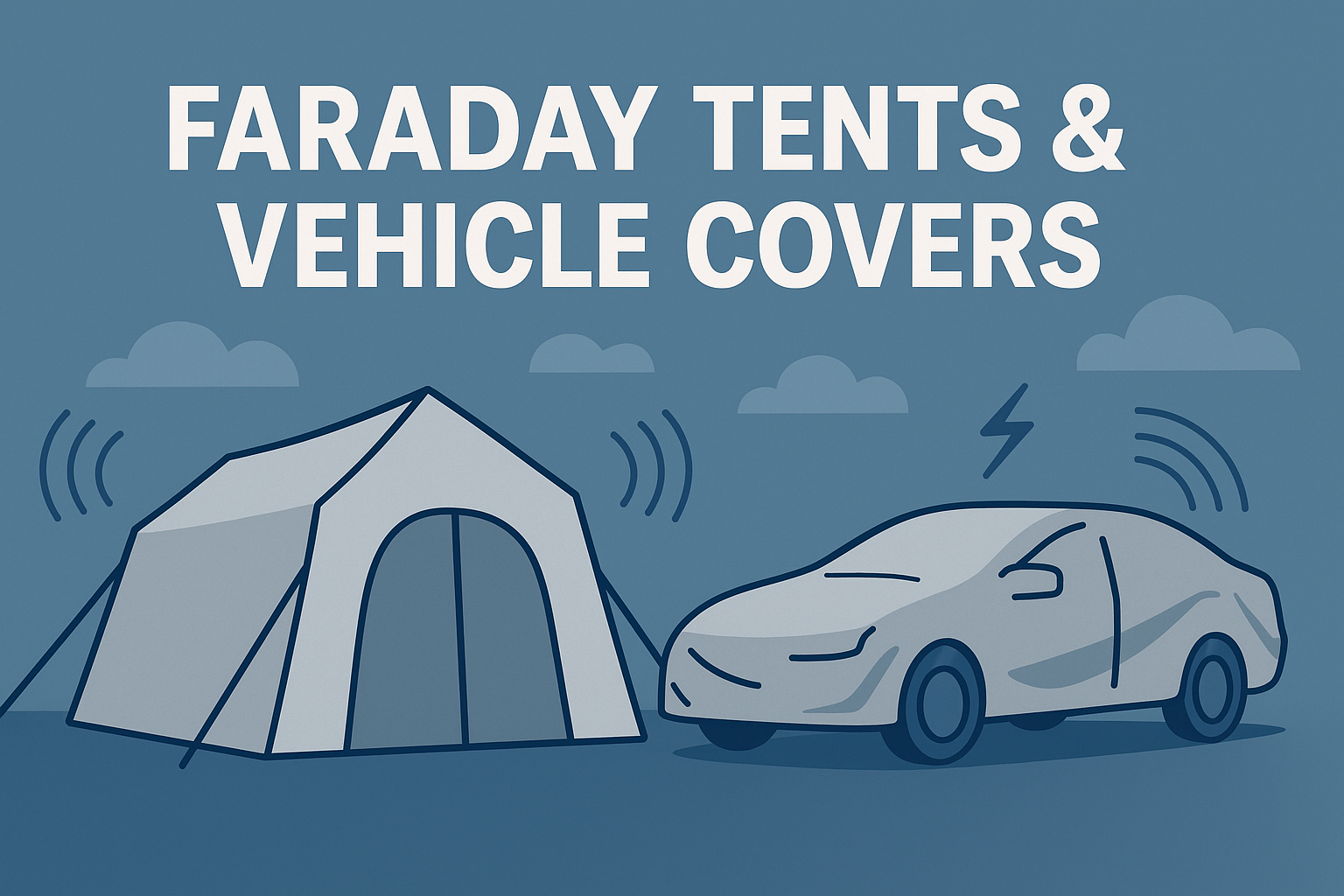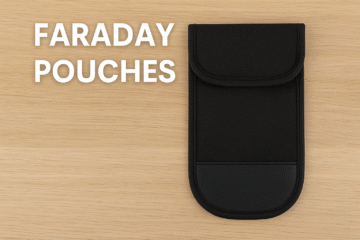Building Invisible Barriers Against Wireless Radiation
With the rapid expansion of 5G networks, Wi-Fi connectivity, and smart home devices, electromagnetic exposure has become part of modern living. For those looking to reduce EMF and radiofrequency (RF) penetration through walls and ceilings, RF shielding paint offers a discreet, science-based solution. This specialized conductive coating transforms ordinary walls into barriers that block wireless signals—protecting your space without altering its appearance.
What Is RF Shielding Paint?
RF shielding paint is a liquid coating infused with conductive carbon, graphite, or metallic particles that reflect and absorb electromagnetic radiation. Once dry, it forms a continuous, electrically conductive surface that blocks or attenuates EMF and RF energy.
Applied like standard wall paint, it can be used in homes, offices, laboratories, and healthcare environments to create “quiet zones” protected from high-frequency fields originating from:
- Cell towers and 5G transmitters
- Wi-Fi routers and access points
- Bluetooth and IoT devices
- Smart meters and power lines
This type of shielding paint is sometimes referred to as Faraday paint because, when properly grounded, it acts like the conductive shell of a Faraday cage—redirecting electromagnetic energy safely to ground.
How RF Shielding Paint Works
RF shielding paint functions through surface conductivity and reflection. Its conductive particles (carbon, graphite, or metallic) disperse evenly across the wall to form a continuous film.
When electromagnetic waves contact this surface:
- Reflection: The paint reflects RF and EMF radiation back toward the source.
- Absorption: Some energy is absorbed and dissipated as heat.
- Grounding: Grounding connections safely discharge electric fields.
Proper installation—especially grounding—is crucial. Without grounding, reflection may still occur, but electric field reduction is limited.
Key Materials and Their Shielding Performance
| Material Type | Conductive Component | Typical Shielding Range (Single Coat) | Appearance |
|---|---|---|---|
| Carbon-Based Paint | Graphite or carbon black | 30–40 dB | Matte black/gray finish |
| Graphite-Enhanced Paint | Graphite and carbon composite | 40–50 dB | Smooth black finish |
| Nickel or Silver-Infused Paint | Metallic pigments | 50–70 dB | Metallic gray sheen |
| Hybrid Carbon-Metal Formulations | Mixed carbon + metallic | 60–80 dB | Slightly reflective black |
Each 10 dB of attenuation equates to roughly a tenfold reduction in signal strength, meaning a 50 dB coating blocks 99.999% of incoming RF energy.
Benefits of RF Shielding Paint
1. High-Level EMF Protection
Blocks and reflects a wide range of frequencies—from Wi-Fi (2.4 GHz and 5 GHz) to cellular (700 MHz–6 GHz) and beyond.
2. Invisible After Finishing
Though most RF paints are dark gray or black, they can be top-coated with standard latex paint, maintaining aesthetic freedom while preserving function.
3. Multi-Surface Compatibility
Adheres to drywall, plaster, concrete, wood, and even exterior facades with the proper primer.
4. Safe and Non-Toxic
Modern formulas are water-based and low-VOC, making them suitable for residential and indoor applications.
5. Durable and Long-Lasting
Provides long-term protection (10+ years) with minimal maintenance when properly grounded and sealed.
Applications
- Homes: Bedrooms, nurseries, or entire living areas near strong Wi-Fi or 5G sources.
- Apartments: Ideal for shared walls between units or areas facing cell towers.
- Offices and Data Centers: Reduces interference with sensitive electronics.
- Hospitals and Laboratories: Ensures stable environments for instruments and shielding of MRI or monitoring rooms.
- Recording Studios: Minimizes radio interference in professional audio spaces.
Installation Process
1. Preparation
- Clean and dry walls thoroughly.
- Remove existing paint flakes, dirt, or oil residues.
- Apply an RF shielding primer if required by the manufacturer.
2. Application
- Apply 1–2 coats using a roller or spray gun.
- Allow proper drying time between coats (typically 12–24 hours).
- Ensure even coverage with no gaps or missed sections.
3. Grounding
- Attach grounding tape or a grounding plate to the coated wall, connected to an electrical ground.
- Grounding is essential for reducing electric fields and ensuring performance consistency.
4. Topcoat (Optional)
- Once dry, the surface can be painted over with any standard decorative color.
- Avoid oil-based paints that may reduce conductivity—use water-based latex paints for best results.
Comparison: Popular RF Shielding Paint Brands
| Brand / Product | Base Material | Shielding (1 Layer) | Grounding Required | Approx. Price (per Liter) |
|---|---|---|---|---|
| YShield HSF54 | Carbon/graphite | 36–44 dB | Yes | $90–$120 |
| LessEMF CuPro-Cote | Copper-based | 50–70 dB | Yes | $130–$160 |
| Swiss Shield ElectroPaint | Graphite/carbon blend | 40–50 dB | Yes | $100–$130 |
| BlocPaint EMF Shield | Carbon hybrid | 45–55 dB | Recommended | $110–$140 |
| Safe Living Technologies ShieldPaint | Carbon + nickel | 50–60 dB | Yes | $120–$150 |
These coatings can be used individually or layered for enhanced attenuation—each additional coat typically increases shielding by 5–10 dB.
Testing Shielding Effectiveness
After installation, it’s important to verify performance using an RF meter (such as the Safe Living Technologies Safe and Sound Pro II).
Steps:
- Measure baseline RF levels before painting.
- Apply and ground the paint.
- Measure again in the same location.
- Confirm signal reduction (expect 90–99.999% attenuation depending on frequency and coating thickness).
Maintenance and Longevity
- Durability: Once sealed, shielding paint can last a decade or more without performance loss.
- Cleaning: Use gentle, non-abrasive methods. Do not sand or scrape coated walls.
- Repainting: If refinishing, ensure grounding remains intact beneath any new layers.
- Humidity: Avoid using in high-moisture areas without proper sealing—metal-based paints may corrode.
Safety and Environmental Notes
Modern RF shielding paints are:
- Non-toxic and water-based
- Low odor and VOC-free
- Compatible with standard home ventilation
They do not interfere with Wi-Fi inside the shielded area if routers are located within the same zone; the shielding acts primarily on outside sources.
Integrating RF Shielding Paint Into a Whole-Home Strategy
For maximum EMF mitigation, combine RF shielding paint with other technologies:
- RF shielding window film for glass surfaces
- Faraday fabrics or mesh grounding layers for floors and ceilings
- Shielding drapes or canopies in bedrooms
- Smart device management (router timers, airplane mode, etc.)
A layered approach ensures comprehensive protection from multiple angles and frequencies.
Key Takeaways
- RF shielding paint transforms walls into powerful EMF and RF barriers using conductive carbon or metallic particles.
- It provides up to 99.999% attenuation when applied and grounded correctly.
- The paint can be top-coated with regular wall colors for invisible protection.
- Grounding is essential to achieve full shielding potential.
- Ideal for homes, offices, and professional spaces, this paint offers a clean, aesthetic way to reduce wireless radiation exposure.

